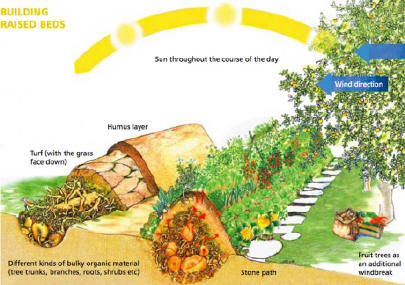
April and May are two of the busiest months in your garden. Get a jump on some of the maintenance now, so you can enjoy those early spring blooms.
Cut off ornamental grasses. If you have ornamental grasses, it's nice to leave them stand for the winter. They provide food for the birds, and winter interest for your garden. But if you don't cut them soon, pieces of them will be blowing across your yard and your neighbors' yards. Hook a bungee cord around the grasses and shear them as close to the ground as you can
get with electric hedge shearers or a chain saw.
While you are at it, look at the base of your grass. If it looks like a doughnut, it's time to divide it. You can dig the whole thing up, divide it, and replant a piece of it, or you can just dig up half of it and leave the rest in the ground.
Sheer back shrubs that bloom on new wood. This will promote better blooming, and healthier shrubs. Cut Knock-out Roses back to one to two feet. Cut Beauty Berry, Caryopteris (Blue Beard), Spirea, Smooth Leaf and Panicle Hydrangeas about in half. Cut most Clematis to about a foot from the ground. (Beware; there are some types that bloom on old wood. You have to know
what kind you have; a great reason to hang onto those plant tags.)
Don't cut Lilac, Forsythia, Azalea, Rhododendron, Big Leaf Hydrangea (the mop heads). Don't cut anything that flowers in very early spring. These plants set their buds shortly after flowering. If you want to prune them, do it immediately after flowering.
Some leaves and dead stubble may be providing protection. It's tempting on a beautiful March day to really clean up your garden. Old mums left from last fall are especially ugly this time of year. Be careful, however, the dead stubble of last year's flowers serve to protect the crown of the plant during the cold weather. Wait until the lows are consistently up in the
40's before cutting these down.
Another example is the Hellebores (Lenten Rose). Their evergreen leaves will continue to look beautiful right up until the temperatures drop into the teens at night. Then, suddenly, the top leaves become crispy brown. It is so tempting to cut them off to reveal the nicer leaves underneath, but the dead ones are protecting those nice ones under them, so wait for
slightly warmer weather.
Fertilize with a slow release organic fertilizer. Organic fertilizer becomes part of the soil and contributes to its health. If you regularly add compost to your garden soil, fertilizing may not even be necessary. A soil test will tell you what you need, if anything.
Check your trees. While there are no leaves to block your view, you can check your shrubs and trees. If you see any dead wood, cut it out. Any crossing or rubbing branches on trees should be removed also.
Protect your soil and the beneficials. This time of year, the ground is soft and stepping on it squashes the tiny air spaces together making it difficult for your plants to get air. Try to keep your feet at the edge of the garden or on the paths as much as possible.
Birds are having difficulty finding food this time of year. Don't cut down plants that are supplying seeds, berries, or fruits for their diet. A solution for this is to find a remote corner, and throw your cuttings into a brush pile where they will still be accessible to the wildlife.
Many beneficial insects (butterflies, praying mantis, spiders, bees. Lady bugs, etc.) lay their eggs in the garden debris, and under the leaves and mulch on the garden floor. Leave as much as you can for another month. Your beneficial insects either eat other insects, or are pollinators, or both. We want these insects in our garden. These are not the insects that
terrorize your vegetable garden. They are the are herbivores. They tend to deposit their eggs close to the plants that they like to eat. For this reason the vegetable garden should be cleaned completely in the fall so these pests will not winter over. It is also another reason to rotate your crops.
A new idea --- Hugelkultur
 No, I didn't misspell it. It's a German word which is new to me (not to the world), but it fits into this discussion of combining gardening, nature, and clean-up. Briefly, here is what to do. Start with logs or dead wood that may be on your property. Add cuttings from shrubs on top of the logs. Throw on any perennial cuttings, leaves, grass clippings, or organic debris
of any kind. Top the entire pile with some soil or compost. Then plant seeds right in it. The rotting debris supplies nutrition, oxygen, and excellent drainage for the growing seeds. Maybe a great way to start a new garden. Google the word, Hugelkultur, and read for yourself if you are interested.
No, I didn't misspell it. It's a German word which is new to me (not to the world), but it fits into this discussion of combining gardening, nature, and clean-up. Briefly, here is what to do. Start with logs or dead wood that may be on your property. Add cuttings from shrubs on top of the logs. Throw on any perennial cuttings, leaves, grass clippings, or organic debris
of any kind. Top the entire pile with some soil or compost. Then plant seeds right in it. The rotting debris supplies nutrition, oxygen, and excellent drainage for the growing seeds. Maybe a great way to start a new garden. Google the word, Hugelkultur, and read for yourself if you are interested.
Read other spring related gardening articles